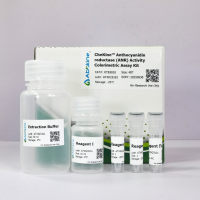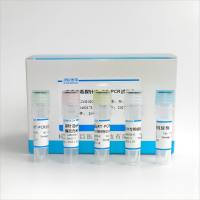Tailed RT-PCR for the Quantitation of Chloramphenicol Acetyl Transferase (CAT)mRNA
互联网
574
Reporter gene plasmids have been used extensively to monitor gene expression and elucidate intracellular pathways (1 –4 ). They have been particularly useful in understanding the architecture of promoter regions and the interactions between promoter elements and cellular or viral regulatory factors (5 –9 ). The conventional strategy has been to transfect host cells transiently with a plasmid bearing the sequences of interest linked to a chloramphenicol acetyl transferase (CAT) reporter gene. Subsequently, CAT activity is measured as a readout by thin-layer chromatography (TLC) or the levels of CAT protein are determined using an enzyme-linked immunosorbent assay (ELISA). However, most transfections-whether stable or transient-result in low levels of CAT gene expression, as long as no activation signal is provided (10 –12 ). Although this is an ideal situation to study gene activation pathways, it is poorly suited to monitor gene repression or negative regulatory mechanisms. To overcome this problem, investigators use cell-activating agents, such as phorbolester and phytohemagglutinin, or transfect a second plasmid expressing a transactivator (e.g., viral transactivator). However, use of such agents might interfere with the pathway(s) being studied and could provide erroneous results. Also, current assays such as TLC or CAT ELISA are often not able to quantitate such low levels of expression, thus hampering studies aimed at dissecting the down modulation of gene expression (13 –15 ).








